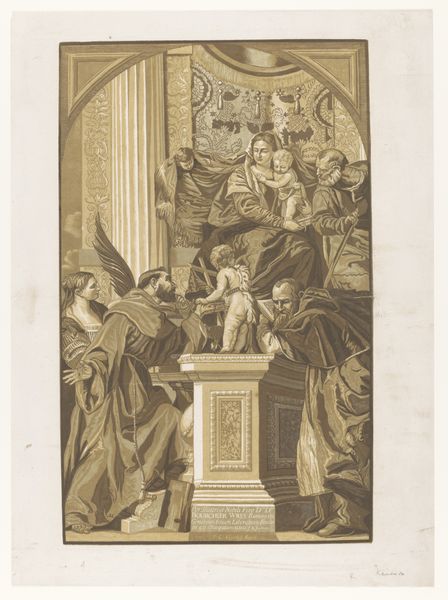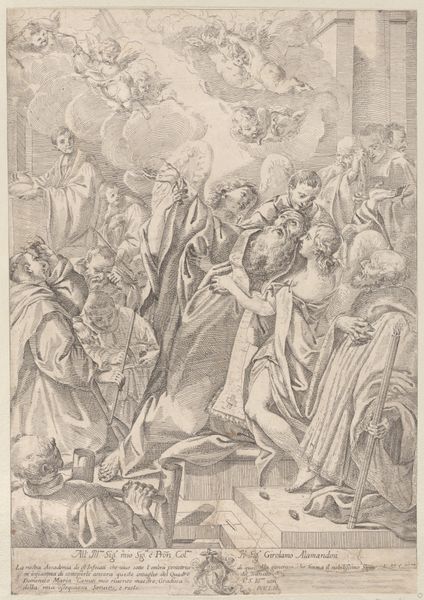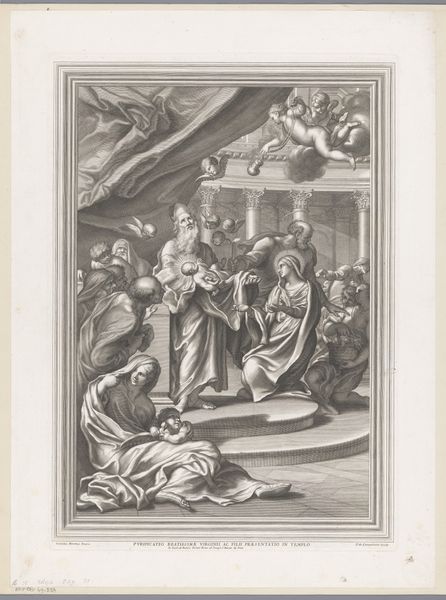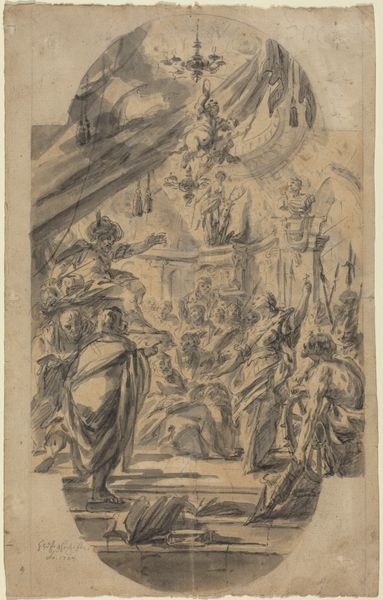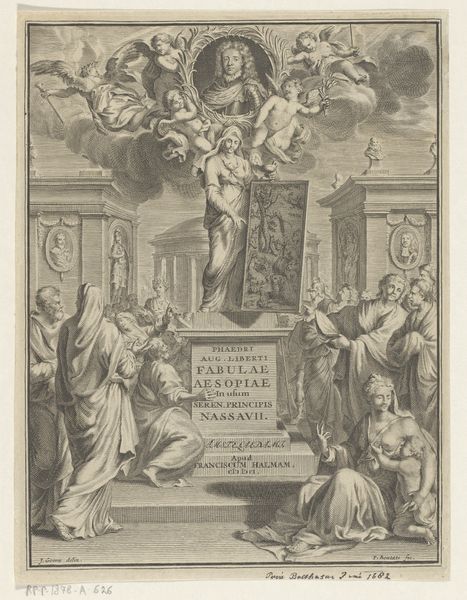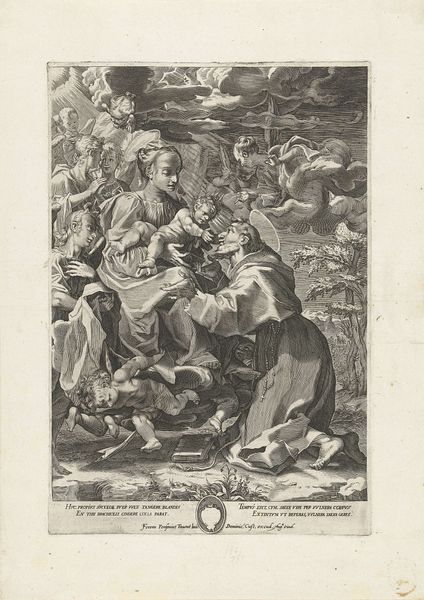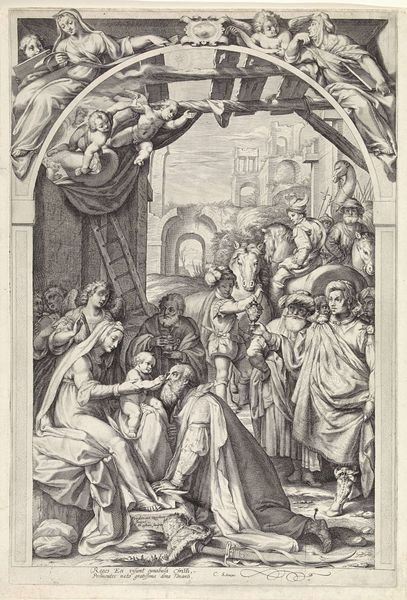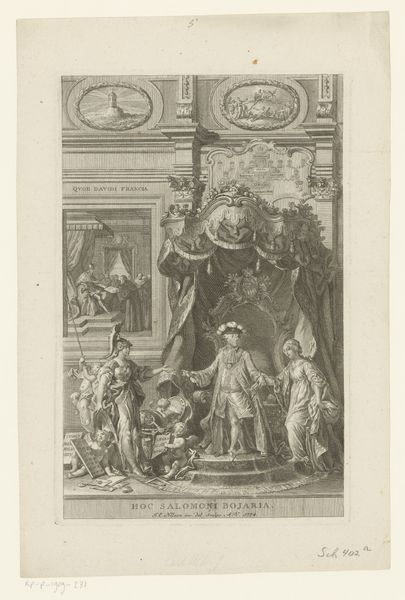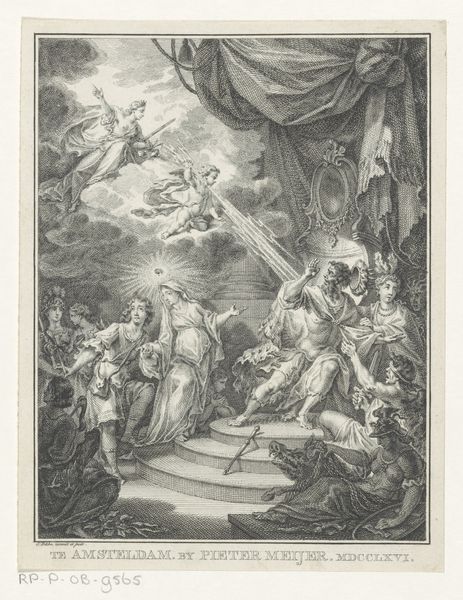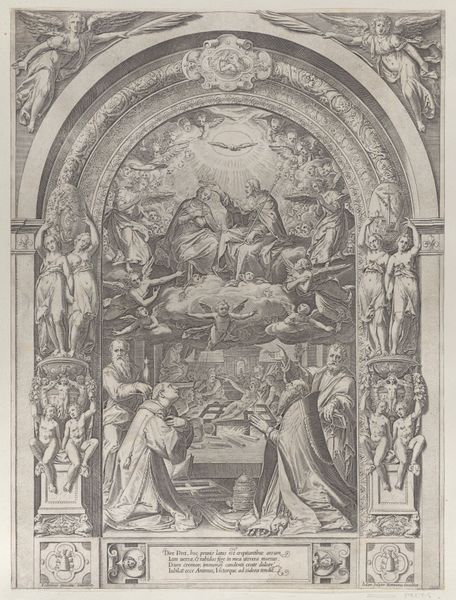
drawing, print, engraving
#
drawing
#
baroque
# print
#
figuration
#
history-painting
#
engraving
Dimensions: height 521 mm, width 378 mm
Copyright: Rijks Museum: Open Domain
Editor: This engraving by Pietro del Po, dating from the Baroque era, depicts “The Presentation of Christ in the Temple.” I’m immediately struck by the composition - the clear division between the earthly figures and the heavenly host above creates a very theatrical scene. What historical or cultural details stand out to you in this work? Curator: What intrigues me is not simply the theatricality, as you mention, but how this theatricality served specific cultural functions within the context of the Baroque era and its public role. This grand depiction serves as visual propaganda during the Counter-Reformation. Editor: Propaganda? How so? Curator: Well, consider the scene itself: a public declaration of faith, a family presenting their child within the institution of the temple. In what ways can the style also be viewed as propaganda? Editor: Ah, I see! The dramatic lighting and heightened emotion are all working to create a persuasive image that reaffirms the importance of the Church. Are the angels a visual clue too? Curator: Precisely. Del Po uses the angelic figures to underscore divine approval. The inclusion of angels looking down on the presentation validates the Church’s practices. Can we consider that these artistic choices were instrumental in conveying political and religious ideas of that time? Editor: Definitely! It's fascinating to see how art wasn't just about aesthetics but also about reinforcing social structures and religious power. This really challenges how I usually view art. Curator: Indeed. Analyzing art within its socio-political milieu allows us to interpret its role in society, past and present. This print encouraged both faith and allegiance.
Comments
No comments
Be the first to comment and join the conversation on the ultimate creative platform.


